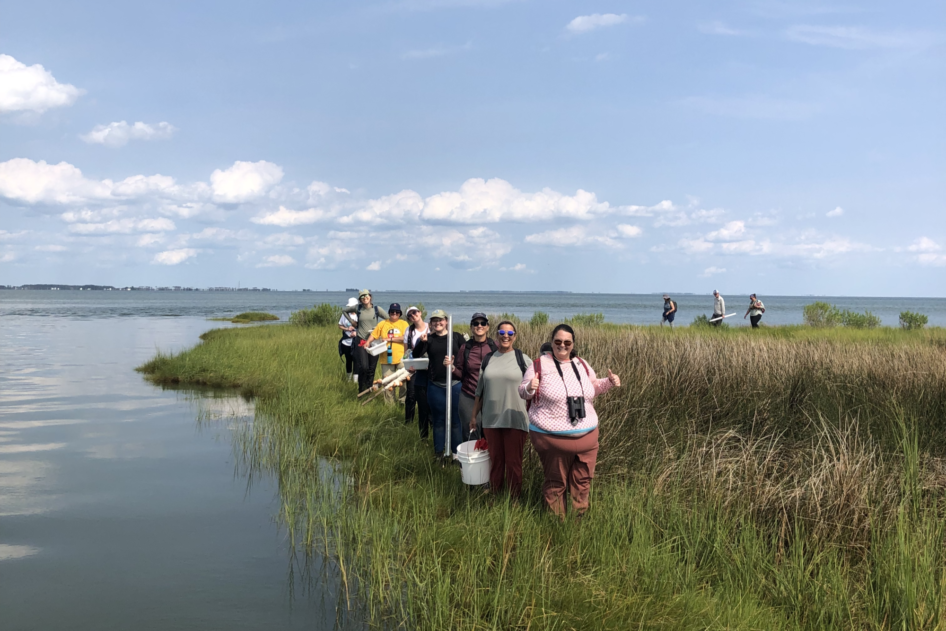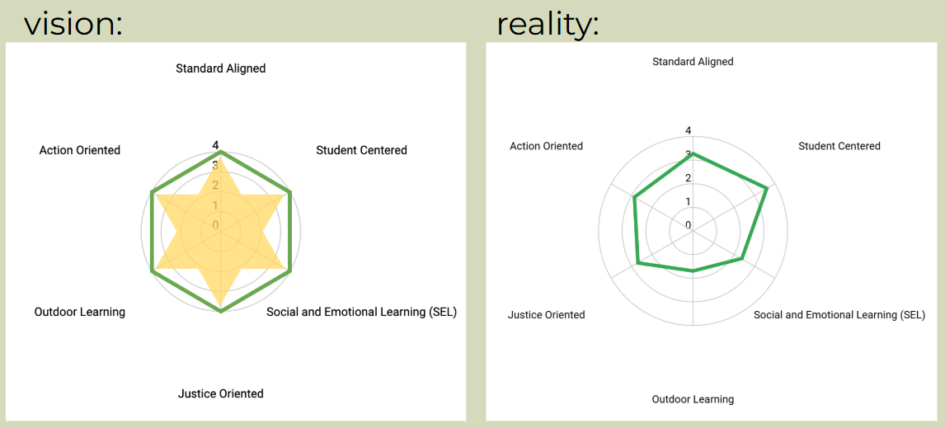Education for Climate Action

A quick google search for climate change education resources will result in millions of links but, which ones are standards-aligned, focused on climate solutions, and go beyond just a quick activity or lesson?
Claire Burnet, a student at Dickinson College in Pennsylvania, joined NOAA’s Environmental Science Training Center (ESTC) as an intern during the summer of 2023. Her task was to identify climate change curricula that are sustained, meaningfully organized, and aligned with the Meaningful Watershed Educational Experience (MWEE) framework and other criteria. She spoke with 33 professionals from across the country and collected 267 resources. Her evaluation criteria included: standard aligned, student centered, social-emotional learning, outdoor learning, and action oriented. Bryn Kearney continued the work during her internship in the summer of 2024 by evaluating the long list of resources.
You can review their evaluation process and climate change resources here.

The evaluation revealed that often the resources didn’t include outdoor learning and social-emotional learning and are not action oriented; criteria which are important to connect student’s to their local community, combat climate anxiety, and offer hope for their future in the face of this crisis.
Claire and Bryn's evaluation didn't included all climate change curricula and units available online but it provides a great starting off point for those looking to embed meaningful climate change learning into their curricula that goes beyond single lessons or activities.
The interviews were also telling about the understanding and awareness of resources. Claire spoke with individuals that ranged from curriculum developers to school district leaders to professors. These professionals spoke of the educator’s desire for more climate change curricula and difficulty finding resources that fit their needs. So work needs to happen to improve climate change resources, but we also need to do a lot of work to share the resources already available.
Climate Change Resources added to Bay Backpack
Claire’s work resulted in two additions to Bay Backpack. First, under Teaching Resources, you can now find Climate Change Curricula and Units—check back often as these lists continue to grow! Second, there is now an Environmental Literacy Model (ELM) for a MWEE focused on climate change for middle school students: Rooting in Solutions: Climate Change and Trees in your Community. This ELM provides an outline and resources for teachers to use and adapt to their local context and centers solutions and social-emotional learning.
There’s more to come!
During Claire’s many interviews she learned of needs and gaps but also, a hopeful future. Many of the professionals interviewed shared that they were assisting in the development of new curricula that should be publicly available in the next year. As those resources are shared partners will be ready to help with training and implementation as we all work to advance education for climate action.
If you know of climate change units or curricula not currently shared on Bay Backpack, email macce.conference@gmail.com.
